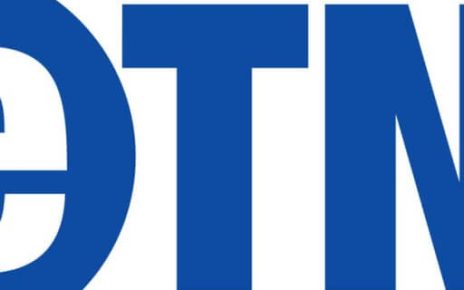Higher education in America has been successfully adapting to sociocultural and demographic shifts throughout much of its long history.
The industrial revolution, GI Bill, admission of women and students of color, and broad reductions of state support for public institutions resulted in changes to operations, culture, and mission. Recently, concern over a “Demographic Cliff,” an expected decrease in high school graduates, has been a common topic for discussion. We believe that many institutions can use this “Demographic Cliff” as an opportunity to rethink institutional priorities and refocus on institutional mission. This demographic shift is not an ignorable issue, yet we expect most institutions will respond productively to this coming challenge, and perhaps emerge stronger for having done so. We present a few topics below we think are worth considering:
- The “Cliff” is not the same everywhere, for all institutions. Some areas of the country are seeing significant recent changes in population. While some regions are declining, others are growing, and the pandemic years and recent large industrial investments (like CHIPS) have influenced some trends. You must know how demographic trends are expected to impact the specific areas you recruit from. Areas with large new industrial investments can see population growth which can bring new potential students to the region. We recommend you examine updated population projections for areas from which your institution recruits to understand coming opportunities and challenges to come.
- High school graduation rates have been increasing recently, which increases the potential pool of traditional aged students for IHEs which may offset expected declines. Nationally, high school graduation has recently increased from 79% to 86%, and while graduation rates vary considerably across communities, IHEs can help. At Miami, we partnered with local school districts to improve high school graduation rates and educational equity, help potential students feel included in the campus community, and accelerate their college education through our Early College Academy, which encourages students in underserved areas to graduate with a free associate’s degree at the same time they receive their high school diploma, which may increase the odds of completing their bachelor’s degree. Another example is how the University of Louisville partnered with the city and school district to build the Cardinal Success Center, providing wellness services through offices embedded in a local high school, working to improve high school student success through another pathway. IHEs can support local communities by increasing high school student success while also serving the institutional mission.
- Retention and success is increasingly important to families and policymakers – while being central to our educational mission. Nationally, four-year institutions retain about 80% of first-year students (closer to 60% for two-year schools), and the national average for graduation rates is about 65%. This leaves significant opportunity for improving core institutional success metrics while also addressing Demographic Cliff challenges by retaining and graduating the students you enroll. It’s the right thing to do, and improved retention offsets potential budget challenges. Imagine you admit 4000 students per year, and realize $60M in net instructional revenue from that incoming class. If you retain 80%, you lose $12M per year, or $36M total for that class (all things equal). Now imagine increasing retention by 2% – just 80 students out of 4,000- which would change 80 more lives and retain $1.2M per year ($3.6M total) for this one class. Over multiple classes, investing in small improvements can help offset anticipated declines in new admissions while better executing on institutional mission.
- International students are available. The American system of higher education is still the best, and there are many global recruiting opportunities. According to IIE Open Doors reports, total international enrollment has largely rebounded from pandemic losses (particularly in graduate education) despite the sociocultural challenges. We recommend exploring challenges or opportunities for growth here. For example, Miami has recently broadened our engagement with countries such as India, Vietnam, and in Africa which helps us be more globally inclusive, broaden our impact, and be more resilient to future challenges.
- Millions of students have started but not finished a college degree. An estimated forty million Americans have invested in a college education but have not completed their degree. This is another opportunity for institutions to serve their mission, potentially amplify their commitment to diversity, equity, and inclusion, and serve a new audience. This may require some rethinking of services and campus culture, course offerings, locations, and modalities, but it could be well worth it.
- Only 37.9% of Americans hold a Bachelor’s degree, but employers increasingly seek college completers. Recent Census data shows that only 37.9% of adults hold a bachelor’s or graduate degree. With 91.1% of students completing high school, there is a significant population of students not adequately prepared for the workforce, and importantly, missing the numerous, multigenerational benefits of higher education.
- Only 14.3% of adults hold a graduate degree while workforce projections expect that jobs requiring advanced degrees will be both the fastest growing and the highest-paying. This gap between employer demand and work force is a significant opportunity for institutions to meet workforce needs and serve student interests. Many institutions are examining this opportunity, although questions remain about whether this market will expanding. We believe that an honest examination of match between demand and offerings can lead to opportunities to diversify revenue streams and to also serve current undergraduate students who can benefit from the opportunity to engage in graduate study through +1 or +2 professional degrees.
- Career changers may be an overlooked opportunity. We believe many institutions can evolve to better serve those who desire professional training/retraining, certification, continuing education, or career development. Industry- and employee-focused credentials delivered in ways more accessible to working adults can expand your institution’s impact (and revenue streams) beyond traditional credentials delivered in traditional ways. As Miami is a rural institution, we have explored opportunities to move high-demand programs online or to locations convenient to population centers, making our programs more accessible. Newly launched one-year professional master’s degrees and flexible stackable certificates also serve undergraduates wanting to stay an extra year to expand their professional preparation.
- Transfer students bring diverse perspectives and new talent to the campus, and can offset attrition, shoring up budgets and sometimes increasing demand for under-enrolled upper-division courses. Promising practices for transfer students emphasize early connection and feelings of being supported and belonging, as well as ensuring systems are easy to navigate and helpful. Miami recently revised our processes and services to make transfer more supportive and “frictionless.” In one year, we doubled the number of transfer students, and we expect that trend will continue upward, fulfilling mission and diversifying revenue streams.
- Ensure curricular offerings match student, family interest and employer needs. Students, families, and employers may hold different expectations for higher education—and these expectations can change rapidly. We recommend periodic evaluation of your potential applicants interests and workforce hiring needs in markets you serve. At Miami, we have facilitated extensive data-informed discussions with faculty and academic leaders to identify opportunities. These investments in new (often interdisciplinary) degree programs have increased applications, decreased discounting pressure, and energized alumni and donors, allowing us to better serve our mission while expanding revenue.
- An inclusive campus is a smart business proposition. Our country is changing, and institutions that have done the long-term, challenging work of becoming more welcoming and inclusive to students, staff, and faculty from different backgrounds and intersectionalities will be more successful. Reducing churn in faculty, staff, and leadership ranks helps the institution retain expertise, reduce search and hiring costs, and ensure operating continuity. Recruiting and retaining a diverse body of successful students obviously leaves the institution more resilient. Inclusion efforts are the right thing to do by themselves, they are a smart business model.
- Re-engage recent high school graduates who opted out of enrolling in college. Between 2019 and 2021, freshman enrollment dropped by more than 10%. Research by the Gates Foundation suggests that many of these students opted out due to concerns around college costs and the perceived value of its outcomes. Notably, though, those same students felt that high school had not adequately prepared them for their future lives. We have an opportunity to reengage these students, provide them with engaging and valuable programs, and help them feel they have the resources to succeed.
In summary, while many pundits are predicting doom for higher education because of the “demographic cliff,” we propose that it may be less a harbinger of the end times, and perhaps more likely an opportunity to rethink your strategic plan. This list of recommendations is not exhaustive, and not all may apply to your institution, but we hope they can be the start of a broad discussion that can lead to enhanced impact, diversified revenue streams, and an institution more resilient to this and other potential sociodemographic changes- known and unknown.
About Jason W. Osborne ,Brent Shock, Miami University
Jason W. Osborne was Provost and Executive Vice President for Academic Affairs at Miami University, and Brent Shock is Vice President for Enrollment Management and Student Success.




